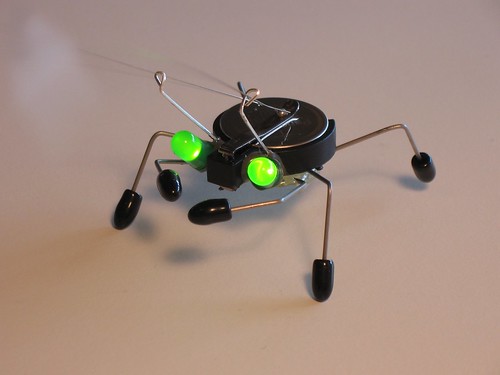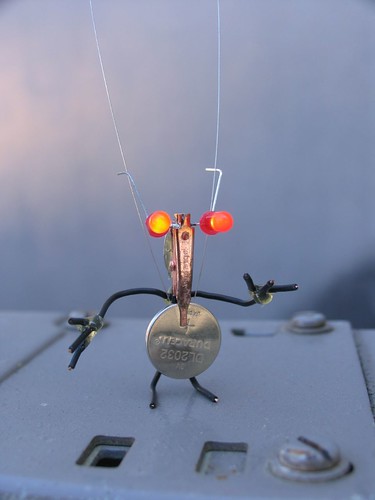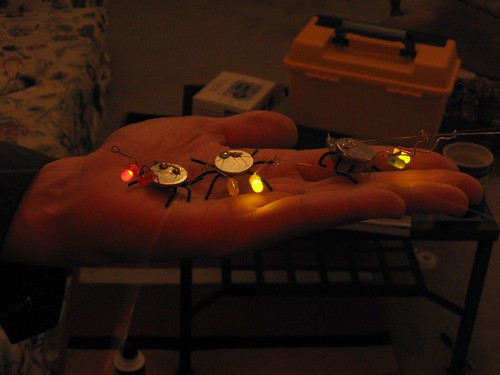Project #1: Blinky-Bugs
The first project is a quick one to build a Blinky-bug using a small battery and a couple of Light Emitting Diodes. This one will get you started in using a few small hand tools and a soldering iron, and give you some ideas on how to use material properties like flexibility in conducting wires to build motion or touch sensors.

Here is one step-by-step online tutorial that shows you how to build one species of electronic bug. But once you understand how a Blinky-bug works, don't feel in any way constrained by this particular design. Here are a few nice images of some other creative designs from Ken Murphy, but even then, don't just imitate. Create. Browse the web for some real insect images to model. Create entirely alien ones! Innovate!



This project introduces the transistor electronic switch with solar energy storage and discharge to drive various circuits starting with flashing LEDs, all in order to make robotic insects that collect and store energy when lit, and either flash or move when it is dark.

Here is a link to a wide variety of different nocturnal solar engine circuits to experiment with.

Here is a link to a wide variety of different nocturnal solar engine circuits to experiment with.
Project #3: Solar Vibrobots
This project introduces a variation of the solar engine from the last project that stores energy until it is full, and then turns on either a motor or some other load like a flashing LED until it is depleted, to then switch back into it's charging mode. The notions around the automatic solar charging and storage circuits are very powerful, and form the foundation of many hybrid and other green technologies.

Here is a link to electronic designs for a wide variety of solar engines, and here is a link to a very nice online step-by-step tutorial by Zach DeBord with some nice inspirational designs.
If you run out of things to do..come find me and let's brainstorm some project ideas.
Here is a link to electronic designs for a wide variety of solar engines, and here is a link to a very nice online step-by-step tutorial by Zach DeBord with some nice inspirational designs.
Also, please feel strongly encouraged to post questions, ideas, useful links and so on in the comments!
